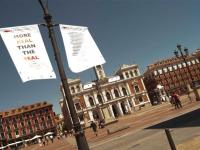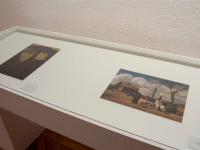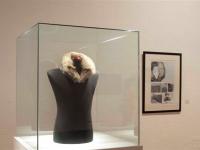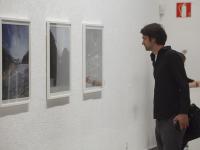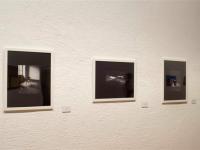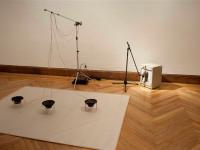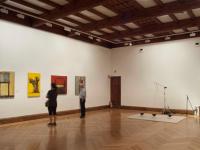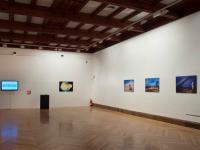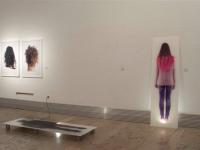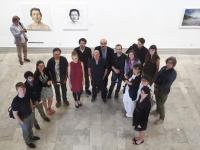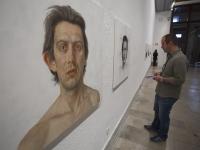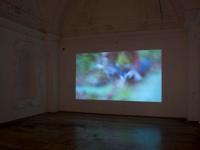CreArt European Exhibition 2013 in Valladolid
Activities
CreArt European Exhibition 2013 in Valladolid
Next Friday 21st June, it will be open in the Municipal Exhibition Hall of “La Pasión” of Valladolid (Spain) the first CreArt European Exhibition MORE REAL THAN THE REAL, curated by the Italian Ilaria Bonacossa and organized by the Municipality of Valladolid in collaboration with the rest of the CreArt cities.
In the exhibition participate 17 European artists selected among 60 proposals that go from painting to photographs to installations and digital media: Joao Pedro Trindade (Aveiro-PT) - Rodrigo Malvar (Aveiro- PT)- Virgis Ruseckas (Kaunas-LT) - Lidia Giusto (Genoa-IT) - Márton Ildikó (Harghita County-RO) - Veres Imola (Harghita County-RO) - Marit Roland (Kristiansand-NO) - Annalisa Macagnino (Lecce-IT) - Ulrich Fohler (Linz-AT) - Elke Meisinger (Linz-AT) - Mark Sengstbratl (Linz-AT) - Radek Kalhous (Pardubice-CZ) - Ondrej Bachor (Pardubice-CZ) - Germán Sinova (Valladolid-ES) - Eduardo Hurtado (Valladolid-ES) - Zygimantas Augustinas (Vilnius-LT) Adrian Sandu (Arad-RO) .
With occasion of the opening, selected artists and representatives and technicals of the partners cities in charge of the implementation of the CreArt project have been invited to come to Valladolid and attend the opening. The exhibition will be open until 18th August, to travel then to Lecce (Italy) and Arad (Romania).
MORE REAL THAN THE REAL
“Our world has been launched into hyperspace in a kind of postmodern apocalypse. The airless atmosphere has asphyxiated the referent, leaving us satellites in aimless orbit around an empty centre. We breathe an ether of floating images that no longer bear a relation to any reality whatsoever”.
Jean Baudrillard, Simulations, New York: Semiotext(e), 1983.
In hyper-reality, signs no longer represent or refer to an external model. They stand for nothing but themselves, and refer only to other signs. Thus even contemporary art has become a simulacrum, a copy of a copy, whose relation to the model has become so attenuated that it can no longer properly be said to be a copy. It stands on its own as a copy without a model. Today we seem to perceive the world and its transformations more through digital representations and images than physical encounter. Decoding information through the web, we are loosing the capacity to relate to reality and are developing our emotions in a space of pure subjectivity, where perceptions are abstract and liquid. Thus visiting an exhibition of contemporary art offers a unique chance to test our perceptions and our assumptions on reality. It is surprising how photographs become more abstract than paintings or installations evoking a desire for a psychological space of emotions and thoughts, while painting questions it’s representational vocation becoming a means that artists employ as a performative practice.
The work of the artists in this exhibition seems to offer us a way of discovering the world by looking inside ourselves, through the immersion in a series of microcosms that have been forged by different backgrounds and contexts; their production offers us access to a series of articulate mindscapes. Their visions often develop out of domestic scenarios, like the works of Lidia Giusto or Elke Mesinger demonstrate, each in their own formal language. It is fascinating how they construct through their series of images, emotional journeys in empty domestic spaces. Their photographs do not portray a specific environment or a recognizable architecture, instead, their work shows how emotions are linked to our perception of buildings in which the human presence has in some way dematerialized. Physicality and hand labour are central, on the other hand, in the production of Annalisa Macagnino’s blankets constructed by recycling material such as wood or hair, as much as in Veres Imola menacing wearable fur neck sculpture. Both these artists use objects in relation to the body in order to create a sense of disturbance and unease. Similarly Ulrich Fohler portrays a tactile sculpture born from the assemblage of all the black objects in her home, which remains, in its bi-dimentionality, more sculptural than representational.
On the contrary the seductive and frail paper-installations by Marit Roland or the technological spaces that envelop us with sounds created by Rodrigo Malvar, project us in a synesthetic journey where colours, images and sounds offer an alternative reality in which rational parameters seem to collapse. Process is central also in the installations of Eduardo Hurtado that develops, through the contamination between video and sculpture, works that transform the exhibition site in an emotional landscape.
Similarly the paintings of Adrian Sandu or João Pedro Trindade, are not windows on reality but develop as mechanisms for the representations of micro-universes that become metaphors of abstract geographical representations, personal attempts to order reality. Likewise in his pseudo scientific environments Ondrej Bachor creates models of thinking processes, transforming art in means of representing of exchanges of energies and procedures of transformation.
The photorealist works in the show are clearly developed by ‘copying’ photographs of an original, thus turning a copy of a copy in something that feels more real than the original itself. Thus, Zygimantas Augustinas and Germán Sinova take reality as their focus creating disturbing human presences that occupy the exhibition space as ghosts that oblige us to come to terms with the perception of our own bodies.
Finally the traditional genre of landscape painting is appropriated and rendered contemporary in the critical representations of landscapes created by Radek Kalhous in which the use of pop colors and montage portray a landscape in radical transformation. Márton Ildikó uses photography as a way of describing traditional representations of folk life still in use in her region, while Mark Sengsbratl photographs natural landscapes as absolute examples of beauty. The cold tone of the light, in his work becomes painterly and the monumental qualities of nature enter into a strong relation with the physical perception of our own bodies.
After decades in which young European artists have tried through their work to question politics and national identity, it seems that today, maybe in response to a general crisis, young talents prefer concentrating on the representation of their own specific universe, through cryptic signs that turn all of them into multilateral mediators between reality and its perception offering a vision of how contemporary art can develop. As a whole this exhibition talks of our complex relation to reality creating a fluid space between what the artworks represent and how they represent it. Contemporary art has developed now through a globalized art scene where languages and practices are continuously displaced, yet a personal and individual point of view similar to a form of anthropology of contemporary society seems to link the projects presented in this European Exhibition, as a crucial event capable of enhancing artist mobility and the circulation of artworks within the framework of the EU funded project CreArt (Network of Cities for Artistic Creation). This exhibition will tour Europe, in the following months, presenting the selected projects first in Lecce (IT) and subsequently in Arad (RO). The hope is that the local calls for residencies and workshops published and shared by the eleven CreArt cities will bring important new exhibitions and exciting new artworks across the EU.
Ilaria Bonacossa















